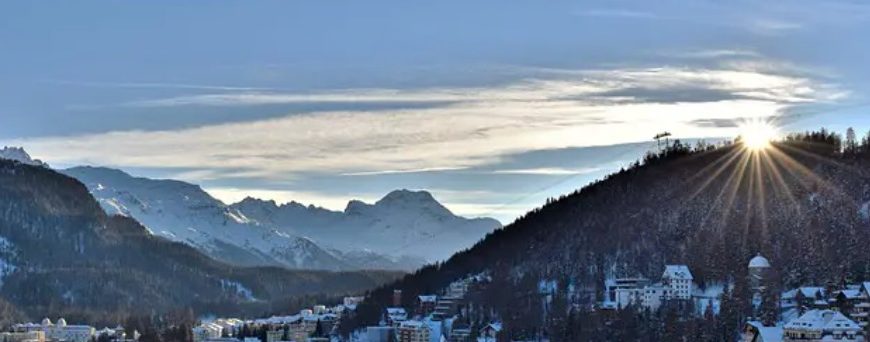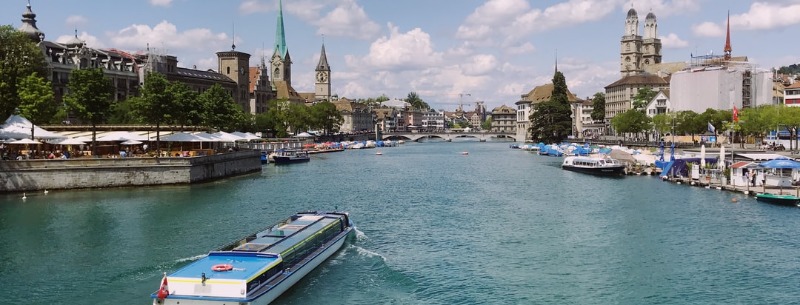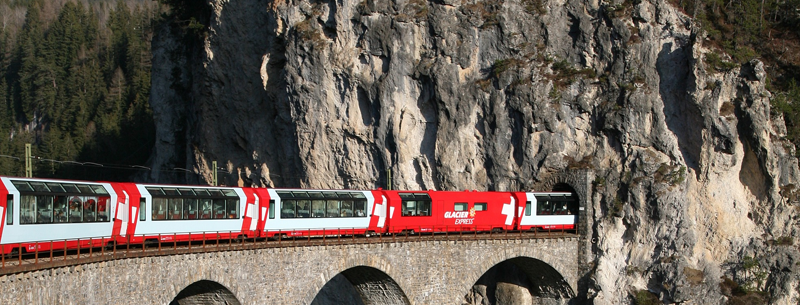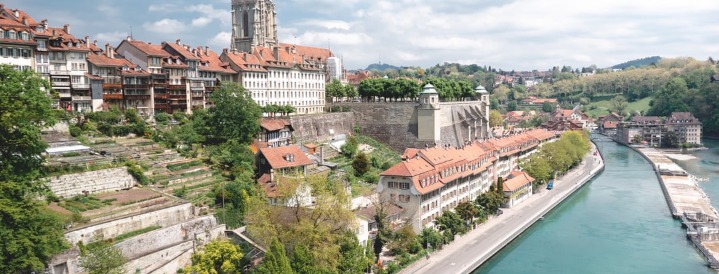2024 Switzerland Vacation Guide
Switzerland is one of Europe’s most visited countries, but one of its least understood. Pass through for a day or two, as most people do, and you’ll get the quaint stereotype of Switzerland that the locals deem suitable for public consumption – the Alpine idyll of cheese and chocolate, Heidi and the Matterhorn. Stay longer though and another Switzerland will emerge the one which the Swiss inhabit, and one which can be an infinitely more rewarding place to explore.
Sights are breathtaking, transport links are excellent, costs are no higher than in Britain or Germany, and the locals are unfailingly courteous. Almost everyone speaks some English along with at least one of the official Swiss languages (German, French, Italian, or, in the southeast, Romansh). Notoriously placid these days, Switzerland nonetheless spent the first five hundred years of its existence rent by conflict and fought a civil war as recently as 1847.
The Swiss Confederation (abbreviated in Latin to ” CH “) dates back to 1291 when Alpine peasants formed an alliance to defend themselves against the Hapsburgs. By the early 1500s, the Confederation had grown into a military superpower feared throughout Europe. It was only with the Reformation that the Swiss began to earn their reputation for neutrality, a reputation that served them well right through into the boom years after World War II. In the 1990s, the country’s image was tainted, as exposés uncovered Swiss banks’ dubious wartime collusion with the Nazis. Public soul-searching in the aftermath of the scandal is heralding Switzerland’s first tentative steps towards ending its dogged isolation and joining the EU and the UN.
As for where to go, Switzerland invented tourism: the country’s breathtaking scenery has drawn travelers since the early 1800s. The most visited Alpine area is the central Bernese Oberland, which has the highest concentration of picturesque peaks and mountainside villages, although the loftiest Alps are further south, where the small but crowded resort of Zermatt provides access to the country’s most distinctive mountain, the Toblerone-peaked Matterhorn.
In the southeastern corner of the country, wild, thickly forested mountain slopes provide the setting for the world-famous resorts of St Moritz and Davos. Of the northern German-speaking cities, Zürich has a wealth of sightseeing and nightlife possibilities and provides easy access to the tiny independent principality of Liechtenstein overlooking the Rhine.
Basel and especially the capital Bern are quieter, each with an attractive historic core, while Luzern is in an appealing setting close to lakes and mountains. In the French-speaking west, the cities lining the northern shore of Lake Geneva – notably Geneva itself, and Lausanne – make up the heart of Suisse-Romande. South of the Alps, sunny, Italian-speaking Ticino can seem a world apart from the rest of the country, particularly the palm-fringed lakeside resorts of Lugano and Locarno, with their Mediterranean, riviera atmosphere.
Beautiful Attractions to Visit in Zurich
Probably, Zurich is better known for its banks, rather than for its attractions. As we know, this city is considered to be the financial center of Switzerland. Moreover, Zurich is the busiest and largest railway station and airport in the country. Tourists who have visited Zurich claim that this beautiful city is very efficient and clean and rank it as having the highest quality of life in the world. To be added that Zurich can please any type of tourist, because it homes a wide range of kinds of attractions, from historical places to cultural attractions. Below you will find three beautiful attractions to visit in Zurich.
Fraumünster
Fraumünster is also known as the women’s church, was built by Louis the German, in 853. Actually, Louis, the German-built Fraumünster for his daughter, Hildegarde, to have a place to worship. Nowadays, this beautiful church is open for tours and services, and its main attractions are the stained glass windows, which are 9 meters high. Other interesting attractions are the church clock tower and the frescoes made by Paul Bodmer.
Lake Zurich
You cannot leave Zurich, without visiting its beautiful Lake Zurich. This incredible lake serves as home to a large number of swimming areas and beaches. This lake is also very clean and it is the right place for boat lovers because they can find a high variety of passenger ships. Moreover, visitors can find several beautiful islands to explore and a large number of manors.
Uetliberg
For an excellent view of the beautiful city of Zurich, visitors can’t afford to miss Uetliberg. This place also has a hotel situated on the top, the Uto Kulm. Uetliberg can be reached by rail from Zurich, but also by a walking trail.
Zurich is one of the most important cities in Europe when it comes to banks, but it also serves as a beautiful destination for tourists. Is Zurich one of your favorite cities in Europe?
Bern- the Swiss Crown Jewel
Bern is the Bundesstadt ( de facto capital) of Switzerland and the capital of Bern Canton, the second-largest canton by population in Switzerland. The official language is German, but the locals speak a dialect called Bernese German.
Bern’s city center is largely medieval. One of Bern’s most famous sights is the Zytglogge ( Time Bell), which is an intricate medieval clock tower with moving puppets. Another impressive building to see is the Gothic Cathedral, built in the 15th century. The old town hosts the largest covered shopping promenade in Europe, thanks to the kilometers of arcades.
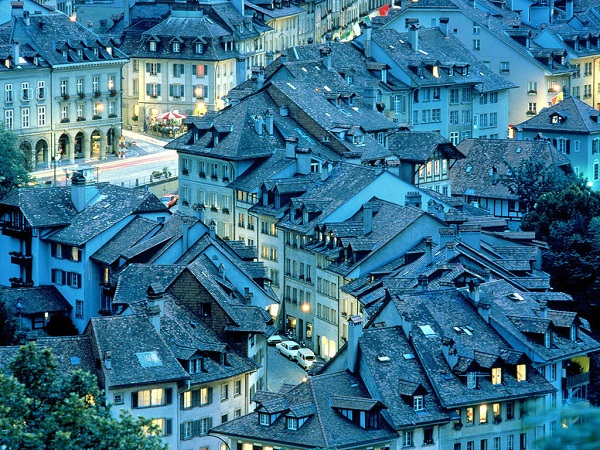
If you are a fan of flowers, you can visit the Mecca of roses- Rosengarten! Not only do you get to see amazing roses, but you also have an incredible view of Bern! Also you wouldn’t want to miss the chance of eating at a great restaurant!
However, If you’re more into animals than plants, in Bern you can visit Bear Park, where you get the amazing opportunity of seeing bears up close. The four bears live in an open-air enclosure so you can admire them freely.
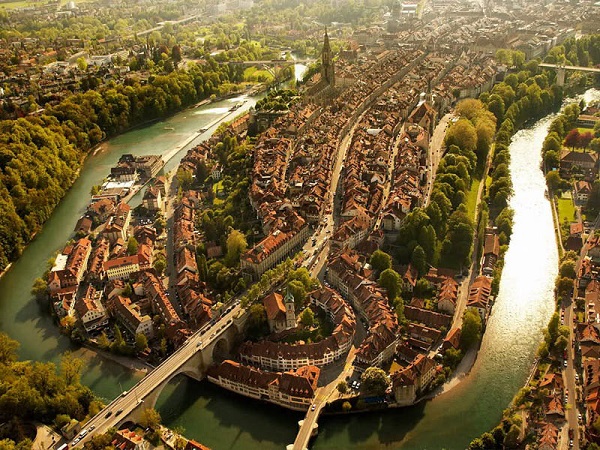
You probably didn’t know this, but Albert Einstein lived in Bern for two years, during which time he developed his Theory of Relativity. His former house serves currently as a museum and offers visitors the chance to see where the man who revolutionized our understanding of time and space lived.
Don’t worry! Bern also offers a bustling nightlife! Behind historical walls, you can find the most trendy clubs and bars! If you prefer a more quiet evening, the Old Town is packed full of wine bars. In any case, the city offers its visitors an amazing experience.
All in all, Bern has something to offer to each and every individual. This beautiful city makes you fall in love instantly! Have you ever visited Bern?
Lucerne, a Magical City in Switzerland
Lucerne is a great place to visit if you seek for a relaxing vacation. Known as a trading city in Switzerland, Lucerne has many tourist attractions that are worth visiting. An impressive thing about this city is that the view always features white snow. Just imagine a landscape with a stretch of pine forest that surrounds the entire city, mixed with blue water lakes and beautiful snow in the back. This is the image that you will see if you come to Lucerne.
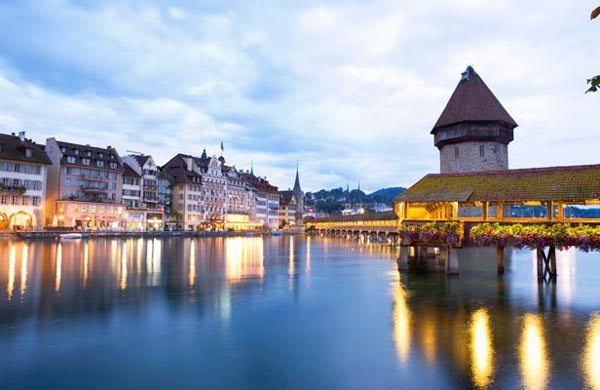
Lucerne is situated in the center of Switzerland. Every year, thousands of visitors are coming from all around the globe to see this beautiful and unique place. Many of these visitors choose a water trip on Lake Lucerne, a 38 square kilometers lake that integrates with Lake Uri and all the way to the Alpine region.
Still, one of the main attractions in this city is a wooden bridge, which is actually located on River Reuss. Named the Chapel and built in 1333, this bridge is recognized as being the oldest wooden bridge in the world. Even if more than seven centuries have passed over him, and several times the bridge has been engulfed by flames, the Chapel remains in perfect shape. The wooden bridge is not the single old structure in Lucerne. Actually, visitors can enjoy the classic beauty of an impressive rural life that this city has to offer.
The second main attraction in Lucerne is the church that is dedicated to St. Francis Xavier. This is a beautiful church with a unique Baroque style. Its construction started in 1666 and finished eleven years after. If you go inside, you will have the opportunity to see many sculptures and ancient paintings that were preserved for many years.
Lucerne is one of the most visited cities in Switzerland, which is without a doubt an amazing country to discover in one of your vacations. What do you think about this magical place?
Adventure Sports in Switzerland
With its landscape of mountains, glaciers, deep gorges, and fast-flowing rivers, Switzerland is the ideal territory for adventure sports. Dozens of companies based in all the main resorts operate thrill-making schemes galore, mostly in summer only (typical prices are in brackets): canyoning (half-day Sfr100), river-rafting (the same), bungee-jumping (from 100m Sfr80; 150m Sfr150; 180m Sfr220), zorbing (where you’re strapped inside a giant plastic sphere and rolled down a mountainside; Sfr50), house-running (where you hook a rope around yourself and run full-tilt down the side of a tall building; Sfr70), flying fox (where you glide down a vertical cliff on a rope; Sfr75), and more. Hang-gliding (Sfr130), paragliding (Sfr170) and skydiving from 4000m (Sfr400) can all be done alone or in tandem with an instructor. Two main centers for adventure sports are Interlaken and Luzern; you generally book at the company’s office in advance, then get bussed out to their preferred site in the mountains and back into town afterward. Local tourist offices always have full information.
Food & Drink
Food and drink can inflict a fairly massive hole in your budget if you’re not careful. Prices are high across the board, although by combining a judicious choice of eateries with forays into picnicking and self-catering you can manage fine on a tight budget without any compromise on nutrition.
Food
Dairy products – cheese, milk, cream, butter, and/or yogurt – find their way into most Swiss dishes. All but a handful of places offer vegetarian set menus, but veggies should be aware that most restaurants default onto standard…
Drink
Cafés are open from breakfast until about midnight/1 am and often sell alcohol; bars and pubs tend to open their doors for late afternoon and evening business only. Daytime places for tea and cakes are dubbed tearooms.
Swiss Museum Passport
If you are thinking of doing some sightseeing in Switzerland, the Swiss Museum Passport gives free entry to some 250 museums, galleries and castles around the country for a month. It costs Sfr30 (students Sfr25) from tourist offices or member museums, and can easily pay for itself in a weekend of gallery-hopping. Consult www.museums.ch/pass for more.
Getting Around Switzerland
Trains
- Basel to: Bern (hourly; 1hr); Geneva (hourly; 2hr 50min); Interlaken West & Ost (hourly; 2hr 10min); Lausanne (hourly; 2hr 30min); Lugano (hourly; 3hr 50min); Luzern (hourly; 1hr 5min); Zürich (every 30min; 1hr).
- Bellinzona to: Locarno (every 30min; 20min); Lugano (every 30min; 25min); Luzern (hourly; 2hr 35min); Zürich (hourly; 2hr 45min).
- Bern to: Basel (hourly; 1hr); Brig (hourly; 1hr 40min); Geneva (every 30min; 1hr 45min); Interlaken West & Ost (hourly; 45min); Lausanne (every 30min; 1hr 10min); Luzern (every 2hr; 1hr 20min); Zürich (every 30min; 1hr 10min).
- Brig to: Bern (hourly; 1hr 40min); Lausanne (twice hourly; 1hr 45min); Zermatt (hourly; 1hr 20min).
- Davos to: Chur (hourly; 1hr 35min); St Moritz (hourly; 1hr 35min).
- Geneva to: Basel (hourly; 2hr 50min); Bern (hourly; 1hr 45min); Brig (twice hourly; 2hr 20min); Lausanne (3 hourly; 35min); Montreux (hourly; 1hr 5min); Vevey (hourly; 1hr); Zürich (every 30min; 3hr).
- Grindelwald to: Interlaken Ost (hourly; 20min); Jungfraujoch (every 30min; 1hr 30min – change at Kleine Scheidegg).
- Interlaken Ost to: Bern (hourly; 50min); Grindelwald (hourly; 40min); Jungfraujoch (hourly; 2hr 30min – change at Grindelwald or Lauterbrunnen, then Kleine Scheidegg); Lauterbrunnen (hourly; 20min); Luzern (hourly; 1hr 55min); Wengen (hourly; 40min – change at Lauterbrunnen); Zürich (hourly; 2hr 15min).
- Interlaken West to: Bern (hourly; 45min); Zürich (hourly; 2hr 10min).
- Kleine Scheidegg to: Grindelwald (every 30min; 35min); Jungfraujoch (every 30min; 50min); Lauterbrunnen (every 30min; 1hr); Wengen (every 30min; 30min).
- Lausanne to: Basel (hourly; 2hr 30min); Bern (every 30min; 1hr 10min); Brig (every 30min; 1hr 40min); Geneva (3 hourly; 35min); Montreux (every 20min; 25min); Vevey (every 20min; 15min); Zürich (every 30min; 2hr 30min).
- Lauterbrunnen to: Interlaken Ost (hourly; 20min); Jungfraujoch (every 20min; 1hr 40min – change at Kleine Scheidegg); Wengen (every 20min; 15min).
- Locarno to: Bellinzona (every 30min; 20min); Domodossola, Italy (hourly; 1hr 45min).
- Lugano to: Bellinzona (twice hourly; 30min); Luzern (hourly; 2hr 50min); Milan, Italy (hourly; 1hr 30min); Zürich (hourly; 3hr 10min).
- Luzern to: Basel (hourly; 1hr 15min); Bern (every 2hr; 1hr 20min); Brienz (hourly; 1hr 35min); Interlaken Ost (hourly; 1hr 55min); Lugano (hourly; 2hr 50min); Zürich (every 30min; 45min).
- Montreux to: Brig (twice hourly; 1hr 20min); Geneva (twice hourly; 1hr 20min); Interlaken (every 2hr; 3hr – change at Zweisimmen & Spiez); Lausanne (every 20min; 25min); Vevey (3 hourly; 10min).
- St Moritz to: Chur (hourly; 2hr).
- Vevey to: Brig (twice hourly; 1hr 30min); Geneva (twice hourly; 1hr 10min); Lausanne (every 20min; 15min); Montreux (3 hourly; 10min).
- Wengen to: Jungfraujoch (every 30min; 1hr 25min – change at Kleine Scheidegg); Lauterbrunnen (every 20min; 15min).
- Zürich to: Basel (every 30min; 1hr); Bern (every 30min; 1hr 10min); Chur (hourly; 1hr 35min); Geneva (every 30min; 3hr); Interlaken Ost (hourly; 2hr 15min); Lausanne (every 30min; 2hr 30min); Lugano (hourly; 3hr 10min); Luzern (hourly; 50min); Sargans (hourly; 1hr 10min).
Buses
- Lugano to: St Moritz (twice daily; 4hr).
- Sargans to: Vaduz (every 20min; 30min).
- Vaduz to: Malbun (hourly; 30min).
Boats ( May-Sept summary; very few boats run in winter )
- Geneva to: Lausanne (3 daily; 3hr 30min); Montreux (3 daily; 5hr); Vevey (3 daily; 4hr 30min).
- Interlaken Ost to: Brienz (hourly; 1hr 20min).
- Lausanne to: Evian, France (hourly; 40min); Geneva (3 daily; 3hr 30min); Montreux (5 daily; 1hr 30min); Vevey (5 daily; 1hr).
- Luzern to: Alpnachstad (6 daily; 1hr 40min); Flüelen (8 daily; 2hr 50min); Kehrsiten (hourly; 35min); Vitznau (hourly; 1hr).
Opening Hours & Holidays
Shop opening hours are customarily Mon-Fri 9am-noon & 2-6.30pm, Sat 8.30am-noon, although it’s becoming more common in the cities to ignore the lunch break and stay open on Saturday until 4 pm; the flipside is that many places take Monday morning off. Most shops now have one day of late-opening, often Thursday until 9pm; those in the subterranean malls at train stations are open daily and close later. Most big-city stations also have 24-hour vending machines dispensing loaves of bread, cheese and cartons of milk. Museums and attractions are often open on Sundays, but virtually all are closed on Mondays.
Almost everything is closed on the following public holidays: Jan 1; Good Friday & Easter Monday (March 29 & 31); Ascension Day (May 9); Whit Monday (May 18); Dec 25 & 26. In Switzerland, shops and banks tend to close for all or part of Swiss National Day (Aug 1) and on a range of local holidays as well. As well as the above, Liechtenstein keeps May 1 as a public holiday and Aug 15 as the national holiday.
